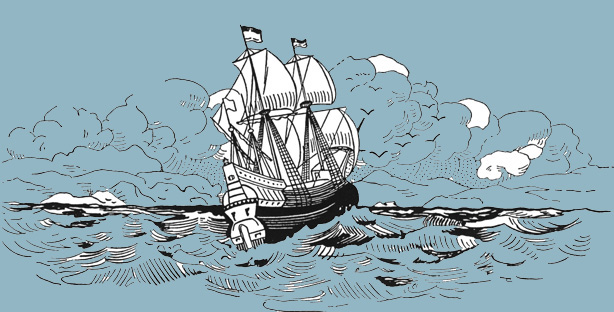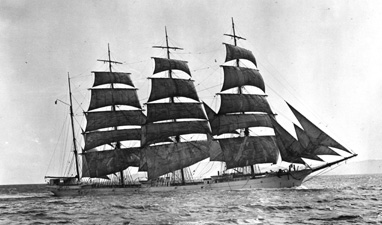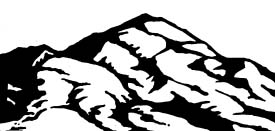
Early California Voyages
by George Emanuels
Early California Voyages offers vivid accounts of the sailing
ships which came to California beginning in 1542 and the adventurers
who sailed them.
Sixty-five years before the British colonists came up the James
River in Virginia, a Portuguese pilot employed by Spain, Juan
Cabrillo, landed on the coast of Upper California.
Francis Drake of England was the second to come to California. He
followed thirty-seven years after the Portuguese pilot. He could be
unpredictable, at one point wielding the blade that sliced the head
from the shoulders of an English passenger.
A third group comprised the seventy survivors of a Spanish
galleon which broke up on the beach of Drake's Bay, still twelve
years before the colonists came ashore at Jamestown.
This beginning of the history of ships coming to California is
the foundation this history builds on. It illustrates and depicts the
explorers who followed: Vizcaíno, Gálvez, La Perouse,
and Vancouver.
Against the law of their government, the Californians became
enthusiastic customers of the smugglers who brought them merchandise
common in Boston shops.
Ships sailed to the California coast seeking sea otter furs and
later fur seal pelts which brought high prices in Canton. Later
Californians sold cattle hides in Boston which supported the shoe and
boot factories in New England.
The few Spanish galleons which came to California ports often
came with scurvy-ridden crews and emaciated survivors. Often a third
or more who left Manila were buried at sea before seeing our
shores.
Trading started with the ship Otter, first American ship to sail
to California. It came from Boston by way of the Cape of Good Hope
and southern Australia in 1796.
In 1812, the ship Albatross delivered $157,397 worth of fur seal
pelts to Canton.
The first whaler, the British Orion, came in 1822 and dropped
anchor off Sausalito. Later, whalers sailed into California ports
often loaded with trade goods. Defying their government, Californios
became enthusiastic customers of smugglers who offered goods to them,
common in Boston shops but rare in California.
By 1831 cattle hides were as good as gold back in Boston. Ships
carried 30,000 to 40,000 cattle hides. By 1848 shipments totalled
over 1,000,000 hides.
Russians, always short of grain, traded three ships they built at
Ross, for wheat. In 1851 they sold by the shipload in San Francisco,
ice for $75 per ton.

Bark Dirigo, in Puget Sound, Washington, about 1910-15. In
1894 she was the first steel square-rigged vessel to be built in the
United States. A. Sewall & Co. built her from plans secured in
England and built her hull with steel plates from Great Britain. Jack
London and his wife Charmian boarded the Dirigo in February
1912 in Baltimore, for a trip around Cape Horn. They sailed to
Seattle and returned home in August. Plummer/Beaton photographic
collection. Courtesy San Francisco Maritime National Historical
Park.
(ISBN 0-9607520-8-0)
304 pages 8.5 X 11 inches, illus.
limited to 550 copies

Other books by George Emanuels
Ygnacio Valley 1834-1970 (1982)
John Muir Inventor (1985)
California's Contra Costa County - An Illustrated History
(1986)
Our First One Hundred Years (1988)
The story of Mason-McDuffie...
California Indians - An Illustrated Guide
(1994)


